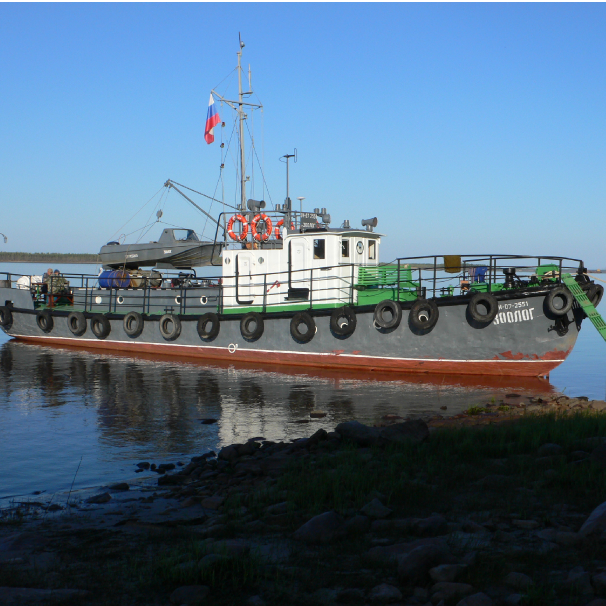Does an ancient Siberian river hold clues to the future of climate modeling?

For the last few years, my career has largely focused on two questions: How does the flow of the Earth’s major rivers vary over centuries, and how do recent changes compare with past changes?
My Ob River saga started in 2012 when Leonid Agafonov visited my lab on a Fulbright Scholarship. Leonid was studying the ecology and hydrology of Siberian river systems using tree rings. Over the years, he collected wood samples from trees growing along the Ob River and found relationships between tree-ring variations and climate. My own research had focused on the statistical extension of flow records of rivers in the U.S. using tree-ring data. As we discussed our research, we realized that perhaps with some additional field collections, we could use Leonid’s tree-ring data to extend Ob River flow records back centuries before the first gauge records in 1936.
You may be wondering why we were so invested in learning about the state of a Siberian river about a hundred years ago. Well, for starters, the Ob alone contributes 12% of the entire freshwater inflow of rivers to the Arctic Ocean. The inflow affects the salinity of the ocean, the coverage of sea ice, and the deep ocean circulation. The global climate system responds to these variables, such that changes in Ob River flow can impact the climate of the entire Northern Hemisphere. Implications from this research have a global rather than regional significance.
CRDF Global seemed like a natural place to start for an international collaborative research effort. We developed our proposal, “Millennial Context for Recent Hydroclimatic Changes in Ob River Basin from Tree Rings,” and were thrilled when the project was funded. Our U.S.-Russia research team consisted of Leonid, now at the Institute of Plant and Animal Ecology in Ekaterinburg, Russia, Irina Panyushkina, and myself, both at the Laboratory of Tree-Ring Research at the University of Arizona, in Tucson. The CRDF Global grant supported travel to collect tree-ring data along the Ob River, and Leonid’s visits to our laboratory in Tucson to collaborate on data analysis.
The basic data for the project comes from trees growing along the banks of the river, and up to several kilometers into the adjacent forest. The patterns of narrow and wide rings in the trees reflect changes in soil moisture. High soil moisture during the growing season favors wide rings. Air temperature is also important to the relationship of tree-growth to river flow of the Ob. Here the link is through prolonged widespread inundation of the basin that occurs in wet years. Inundation of vast expanses of the basin cool the air temperatures and further reduce drought stress in the trees.
So far our data shows that trees along the Ob grew more during wet years than during dry years in the 20th and 21st centuries. We have only processed part of our huge collection of cores, but that data allows us to extend the record of Ob River flows back to the early 1600s. From this, we determined that the historical flow records, beginning in 1936, does not tell the complete story of the Ob. Natural systems vary on many time scales, and relying on short records to summarize variability can be misleading.
Because we must understand the past in order to prepare for the future, we plan to extend estimation of flow even further into the past using tree-ring widths from remnant wood exposed in peat layers along the banks of the Ob. Wood samples at the bottom of the peat layer are from trees that lived about 10,000 years ago. These historic samples could give us a glimpse of the Ob River thousands of years ago.
If climate models are accurate enough for reliable projections of future climate, they should also be able to generate patterns of climate experienced in the past. Failure of models to reproduce climate patterns of the past might indicate shortcomings in the way the models handle the data. In this sense, our reconstructions can be used as targets to guide modification of the model equations. We hope that climate modelers will eventually be able to use the results of our study to modify their models such that they more accurately represent the processes governing climate variation and change. This would lead to more accurate predictions of future changes in global climate due to increasing greenhouse gases and other factors. Tree-ring data, such as those collected under our CRDF Global project, are crucial in understanding variability in the global climate system. Global studies require regional data, and international collaboration is essential to ensure the quality and proper interpretation of that data. Projects such as ours link regional experts with large scale modelers to answer problems of global significance.



